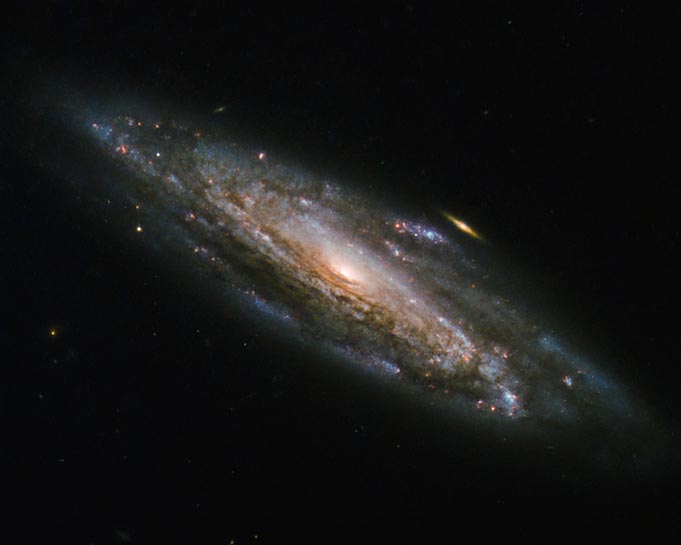
Spiral Galaxy
RA 14h 19m 12.85s Dec 24° 47' 55.28"
Boötes
220 million light years
14.0
1.5 x 0.35 arcmin
1.35 x 1.22 arcminutes
North is 4.0° right of vertical
ESA/Hubble & NASA
September 4, 2017
ABOUT THIS IMAGE:
Like firecrackers lighting up the sky on New Year's Eve, the majestic spiral arms of NGC 5559 are alight with new stars being born. NGC 5559 is a spiral galaxy, with spiral arms filled with gas and dust sweeping out around the bright galactic bulge. These arms are a rich environment for star formation, dotted with a festive array of colors including the newborn stars glowing blue as a result of their immensely high temperatures.
NGC 5559 was discovered by astronomer William Herschel on April 10, 1785 and lies approximately 240 million light-years away in the northern constellation of Boötes (the herdsman)
In
2001, a calcium-rich supernova called 2001co was observed in NGC 5559.
Calcium-rich supernovae (Ca-rich SNe) are described as "fast-and-faint",
as they're less luminous than other types of supernovae and also evolve
more rapidly, to reveal spectra dominated by strong calcium lines. 2001co
occurred within the disc of NGC 5559 near star-forming regions, but Ca-rich
SNe are often observed at large distances from the nearest galaxy, raising
curious questions about their progenitors.